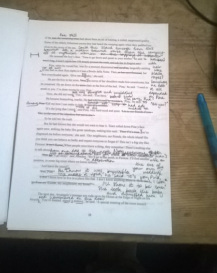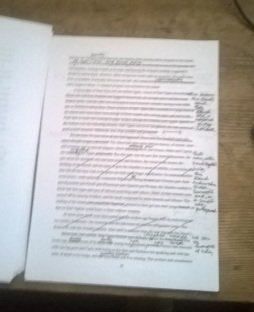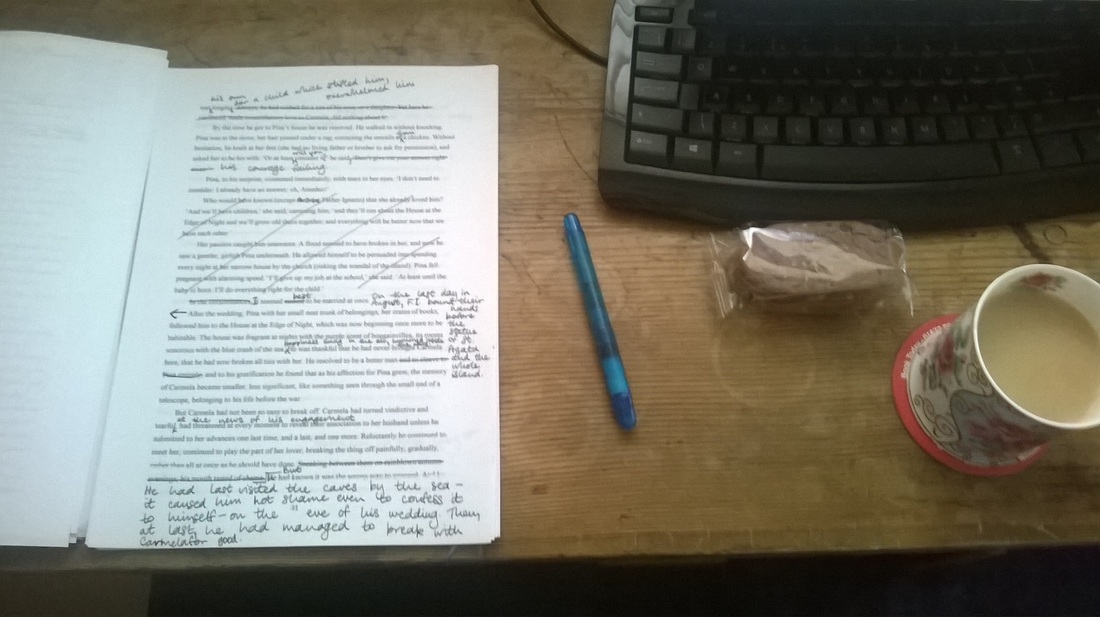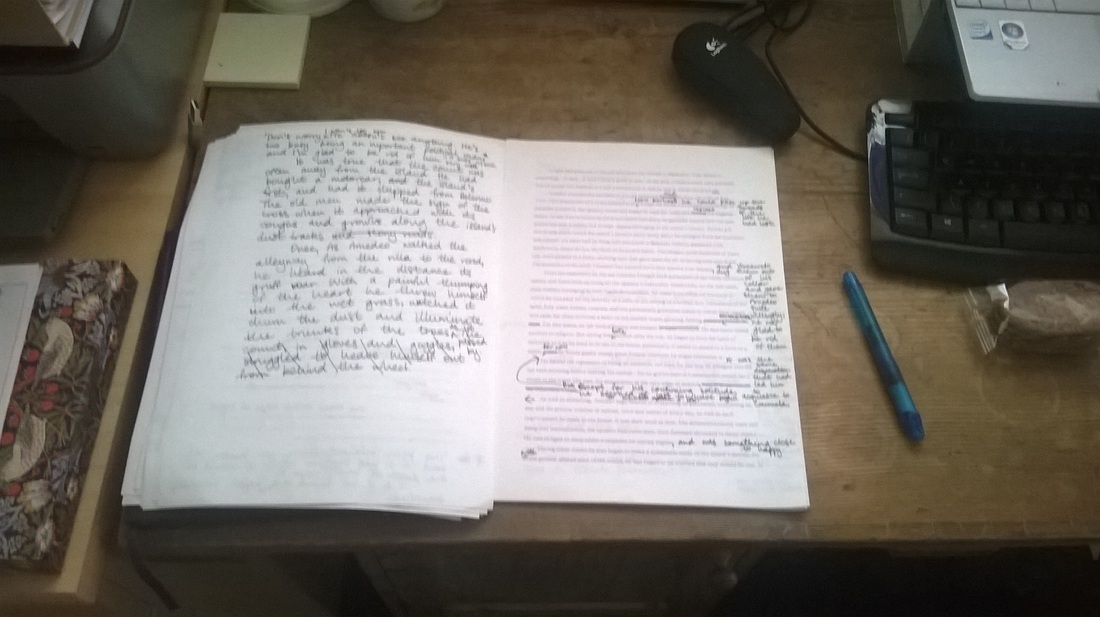There's a commonly-cited writing 'rule' that all good writing is rewriting. I think this is true, with some caveats. Writing a book is like stepping into a labyrinth, and it's crucial not to get lost in the process. Each draft has to take the piece of work closer to a finished manuscript. Sometimes, rewriting no longer takes a manuscript forward, only in various sideways directions, or - at worst - back the way you came. So, particularly when trying to get a first draft finished, writers have to be strict with themselves. A large part of the rewriting process is knowing when to rewrite, and when to stop.
Otherwise, I think all rewriting is probably a good thing. I thought it would be fun to share a few pictures of the rewriting work I've been doing over the last few days, because my chaotic, scrawled draft really illustrates just how much thinking and rethinking goes into a finished book! This is what nearly all the authors' manuscripts that I've seen look like, from A. A. Milne to Virginia Woolf. Apparently no one is immune from the need to rewrite...
| What I'm working on here is the first quarter of my new book. This section, about 20,000 words, will eventually be some kind of Part One. I've spent several months researching and writing it, trying out different structures and narrators and plot lines, and making quite major changes along the way. Now the story has begun to gain momentum, I decided it was time to look at in more detail.Here's one of the early pages of the draft. There was a lot to add here, some of it from other versions of the story. The good thing about working on paper is that you can see all the different alternatives you considered - and if you want to rewrite your rewriting you can also do that! |
| On this page, by contrast, there was a lot to take away. Often, in early drafts, you explain too much, or say the same thing in three different ways - what my agent, Simon, describes as 'scaffolding'. In general, cutting this material out of a draft is like pruning a tree: the whole thing comes back stronger and with a clearer shape. Or something like that... |
Kiran Desai, whose The Inheritance of Loss is a masterpiece, worked on it for ten years. Ten years is longer than most people in the world will ever spend on any single thing, except perhaps on their human relationships: a marriage, a partnership, a friendship, the raising of a child. Desai has spoken movingly about the sacrifice and difficulty involved. But she's also spoken about the rewards. There's a high level of detail and craftsmanship about the (re)writing process, but there's also something magical about seeing a book, by degrees, come closer to your idea of it. It never quite gets there, but it approaches...




 RSS Feed
RSS Feed
